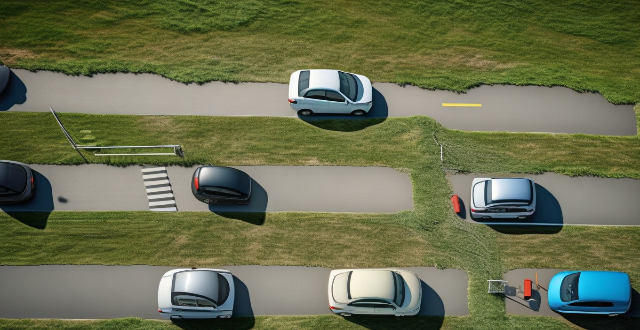Self-driving cars work through a combination of sensors, cameras, and algorithms that enable them to perceive their surroundings, determine their location, plan a route, and control the vehicle's movements. The safety of these vehicles depends on several factors, including the technology used, testing and validation processes, regulations, and human factors. While they have the potential to reduce accidents caused by human error, new risks such as cybersecurity threats and software glitches must also be addressed.

How Do Self-Driving Cars Work?
Self-driving cars, also known as autonomous vehicles, are equipped with a variety of sensors, cameras, and algorithms that enable them to operate without human intervention. The technology behind these vehicles is complex and involves several steps:
1. Perception
The first step in the process is perception. This involves the vehicle's sensors and cameras collecting data about its surroundings, such as other vehicles, pedestrians, road signs, and obstacles. The data collected is then processed by the vehicle's computer system to create a detailed 3D map of its environment.
2. Localization
Once the vehicle has perceived its surroundings, it needs to determine its location within that environment. This is done through a combination of GPS and mapping data, which allows the vehicle to accurately determine its position on the road.
3. Path Planning
With the vehicle's location determined, the next step is path planning. The vehicle's computer system uses algorithms to determine the best route to take based on factors such as traffic conditions, road regulations, and the desired destination.
4. Control
Finally, the vehicle's control system takes over, using the planned route to navigate the vehicle safely and efficiently. This involves adjusting the vehicle's speed, steering, and braking as needed to maintain a safe distance from other vehicles and avoid obstacles.
Are Self-Driving Cars Safe?
The safety of self-driving cars is a complex issue that depends on several factors, including the technology used, the testing and validation processes, and the regulations governing their use. Here are some key points to consider:
1. Technology
Self-driving cars use advanced technology that has the potential to reduce human error, one of the leading causes of accidents. However, there are still technical challenges to overcome, such as ensuring that the vehicle's sensors and cameras can accurately detect and respond to unexpected situations.
2. Testing and Validation
Before self-driving cars can be widely adopted, they must undergo extensive testing and validation to ensure that they meet safety standards. This includes both simulated testing and real-world testing on public roads.
3. Regulations
Governments around the world are developing regulations to govern the use of self-driving cars. These regulations will help ensure that the vehicles are safe and reliable before they are allowed on public roads.
4. Human Factors
While self-driving cars have the potential to reduce accidents caused by human error, they also introduce new risks, such as cybersecurity threats and the potential for software glitches or malfunctions. It is important to address these issues through rigorous testing and ongoing monitoring.
In conclusion, self-driving cars have the potential to revolutionize transportation and improve safety on our roads. However, it is essential to carefully consider the technology, testing, regulations, and human factors involved to ensure that these vehicles are safe and reliable before widespread adoption.